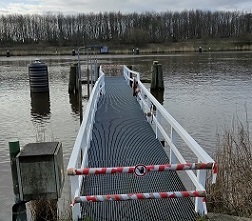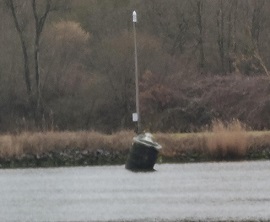Under construction! Last modification: 17.4.2024
For hundreds of years ships have been propelled by wind, later by engines, but have always been controlled mainly by conventional rudders.

The purpose of the 'Telligstedt Institute for advanced Ship Controllability' is to find new solutions for controlling ships
and to evaluate them using model ships.
Today harbours provide tugs to assist in the control of big ships, and some ships are equipped with bow thrusters,
stern thrusters, or with propulsion system that provide better control like Schottel drives or Voith Schneider propulsion.
Despite of all this, accidents are still happening too often.
Living near the Kiel Canal and walking the dog along the siding 'Fischerhütte' a few times a week, I witnessed some of them.


One time I was there when a a ship could only be stopped using its anchor to prevent hitting the shore.
All these accidents relate to control problems of the ships:
The ships cruise in the canal with a speed of 6.5 kn and have to stop in the sidings to let upcoming ships pass by.
If they are in a hurry and did not slow down long before reaching the siding, they have to use reverse to stop.
Unfortunately a conventional ship with a single propeller and a normal rudder becomes uncontrollable then, and the stern moves left or right.
The modern bow thrusters and stern thrusters are no help in this situations since they are ineffective above 2 kn.
Among the solutions investigated, a duct- rudder, paddle wheels (no joke!) and a thrust reversing rudder have very promising results.
They seam to solve the problem and are able to prevent those accidents.
How it began
Rudder- Insanity
Tunnelthruster- Tragedy
Solutions
The experimental ships
about